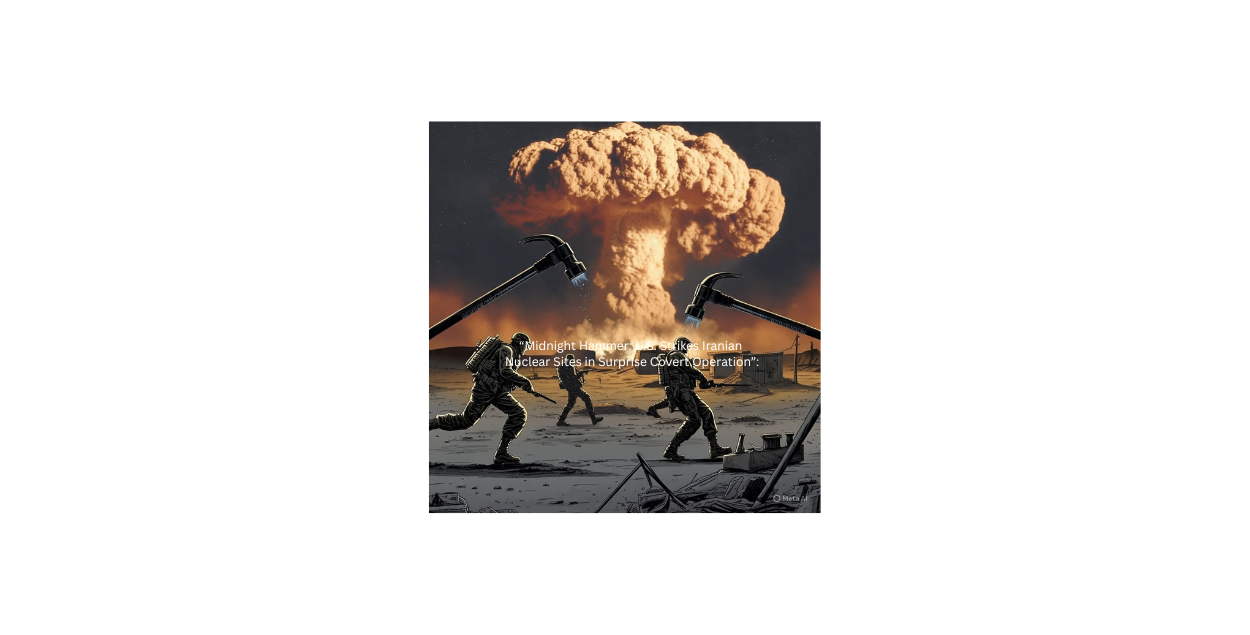FnF News
FNF News | National Security & Middle East Affairs
Published: June 24, 2025
By: Khadija Khan, Senior Global Affairs Correspondent
Operation Midnight Hammer: U.S. Strikes Iranian Nuclear Sites in Covert Weekend Raid
Tehran / Washington D.C. — In a stunning escalation of already heightened tensions, U.S. military forces have reportedly carried out precision airstrikes on at least three Iranian nuclear-related facilities. The strikes, executed under the codename “Operation Midnight Hammer,” were launched during the early hours of Saturday morning, catching international observers and Iranian defense networks by surprise.
While the U.S. Department of Defense has yet to issue a formal public briefing, multiple intelligence leaks, satellite imagery, and regional reports confirm the scope and impact of the strikes.
What Happened
According to defense officials speaking on background, stealth drones and advanced cruise missiles targeted:
- An enrichment site near Natanz, long known to house uranium centrifuges.
- A classified warehouse facility outside Isfahan, previously linked to heavy water research.
- A subterranean structure near Arak, suspected to contain enriched uranium stockpiles.
No U.S. military casualties have been reported. Damage assessment shows that the strikes were surgically precise, avoiding civilian infrastructure while inflicting significant setbacks on Iran’s nuclear development timeline.
Strategic Objectives
Sources inside the Pentagon have described the operation as a “limited kinetic maneuver” with three strategic goals:
- Delay and disrupt Iran’s near-weapons-grade enrichment efforts.
- Project deterrent force without triggering a broader regional war.
- Signal readiness to allies and adversaries ahead of upcoming nuclear diplomacy talks.
President Trump, whose foreign policy doctrine has leaned on sharp, targeted military moves coupled with high-stakes diplomacy, is said to have approved the operation without a full congressional vote. This has already drawn criticism from several lawmakers, including Senator Chris Murphy (D-CT), who called for an emergency congressional hearing.
Iran Responds
Iranian state media has labeled the attacks “a direct act of war” and vowed “strategic retaliation.” Supreme Leader Ali Khamenei declared in a rare televised address that “the United States will bear the consequences.” Tehran has since elevated its military alert levels and activated proxies in Syria and Iraq.
While Iran’s official response remains restrained, cyber retaliation and asymmetric proxy attacks are considered highly likely. U.S. military installations in the Persian Gulf and diplomatic outposts in Iraq have been placed on high alert.
Regional and Global Reaction
Reactions from U.S. allies have been cautious but concerned:
- Israel, widely suspected to have assisted with operational intelligence, has made no official comment but increased its Iron Dome deployments in the north.
- European leaders expressed alarm at the strike’s potential to derail ongoing efforts to restore nuclear negotiations.
- Saudi Arabia and the UAE privately welcomed the move but urged restraint in public statements, wary of Houthi retaliation inside Yemen.
Oil markets responded immediately. Brent crude rose 7% in overnight trading, reflecting investor anxiety about further destabilization in the Strait of Hormuz, through which one-fifth of the world’s oil passes.
Legal and Political Fallout
The legality of the strike is already being debated in Washington. Critics argue that Congress was not consulted, and that such military actions must fall under War Powers Resolution oversight. Administration officials insist that the action falls within the President’s constitutional authority to protect national security and U.S. allies.
Within the GOP, support has largely coalesced around the President’s decision, with Senator J.D. Vance stating that “America cannot afford to wait for Iran to become North Korea with oil.”
Democratic leaders, however, warned that “reckless escalation risks dragging American forces into a regional war with no endgame.”
What’s at Stake
The operation signals a significant departure from quiet deterrence to active disruption. The U.S. has drawn a red line — and crossed it. Now, the world is watching Iran’s next move.
While no war has been officially declared, the boundaries of confrontation have been redrawn. Whether this action leads to de-escalation through strength or a regional spiral remains unknown — but a new phase of U.S.-Iran confrontation has clearly begun.

